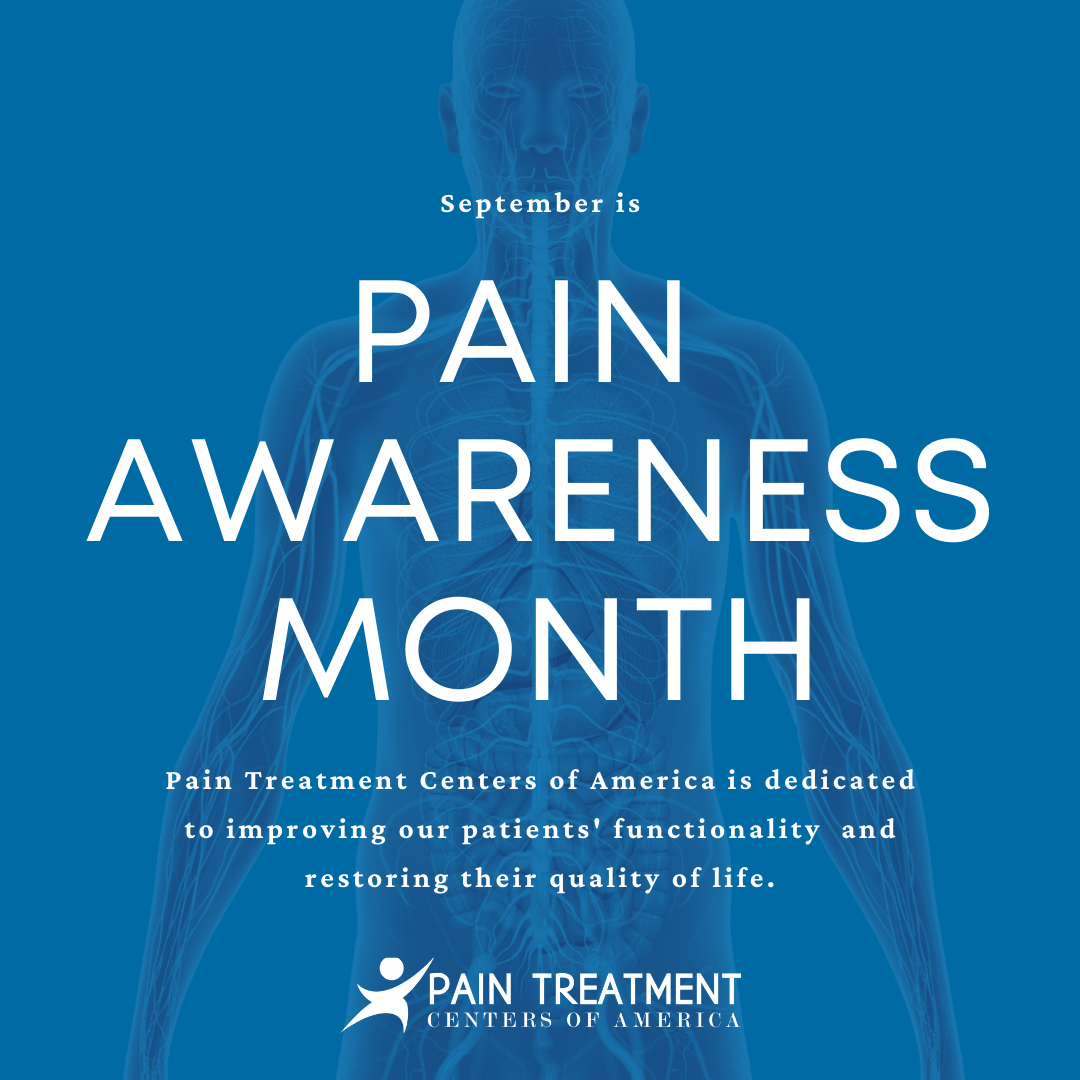Call for more information: (844) 215-0731
New Patient Department:
(501) 254-0967
Referrals (Fax): (888) 630-8885
Medical Records (Fax): (501) 476-5707
Pain Awareness Month Information
Raising awareness. Giving relief.
Each September is Pain Awareness Month
The Centers for Disease Control and Prevention estimates that across the U.S., between 11% and 40% of adults suffer from some form of chronic pain. The 40% figure comprises more Americans than those suffering from diabetes, heart disease and cancer combined.
Pain is both a physical and emotional experience, and it is best treated with a holistic approach that engages both of these needs.
When endured for a prolonged period, it can have an especially debilitating impact on people’s everyday lives, preventing them from fully engaging in work, school or family activities.
What You Need to Know About Pain
The experience of pain begins in receptor nerve cells beneath the skin, located throughout the body. Stimulation of these nerve cells is what produces the physical sensation.
Pain can occur throughout the body or feel concentrated in a particular area. It can happen in response to a specific event or injury, such as from a medical procedure or an accident. Pain may also be short and temporary, called acute pain, or long in duration. The latter, particularly when it relates to a specific condition, is what is referred to as chronic pain.
Facts About Chronic Pain
Pain is typically considered chronic when it lasts for more than 12 weeks. There is not an exhaustive list of which conditions constitute chronic pain, but examples include:
Post-Surgical Pain
Post-Traumatic Injury Pain
Nerve Damage Pain
Arthritis
a family of conditions ranging from joint inflammation to autoimmune diseases
Headaches & Migraines
The important thing to remember is that pain is the body’s way of signaling that something is wrong, even if it is minor. Pain that is unusual, long-lasting – or that gets in the way of living a normal, productive life – should always be addressed by a clinician.
What is Chronic Pain Management?
Managing both acute and chronic pain involves addressing the symptoms and causes.
Although opioid medications are well known, there are scores of effective alternatives for the management of chronic pain. Indeed, research suggests opioids are not significantly better than non-opioid pain medications in addressing chronic pain.
At Pain Treatment Centers of America, our minimally-invasive treatment options include physical therapy, joint injections and advanced techniques such as intrathecal pain pumps, a non-narcotic option for managing chronic pain. In fact, we are one of the top three clinics in the U.S. for the number of pumps implanted.
Greater awareness of pain can bring positive, transformative change for those who suffer from it.
Call usReferrals (Fax)(888) 630-8885
Patient Support Hours
Monday - Thursday 8:00 - 5:00

All Rights Reserved | Pain Treatment Centers of America | Arkansas | Mississippi | Texas


